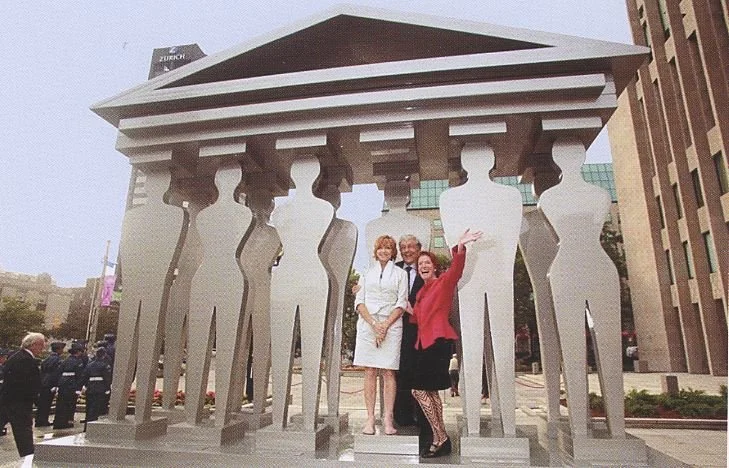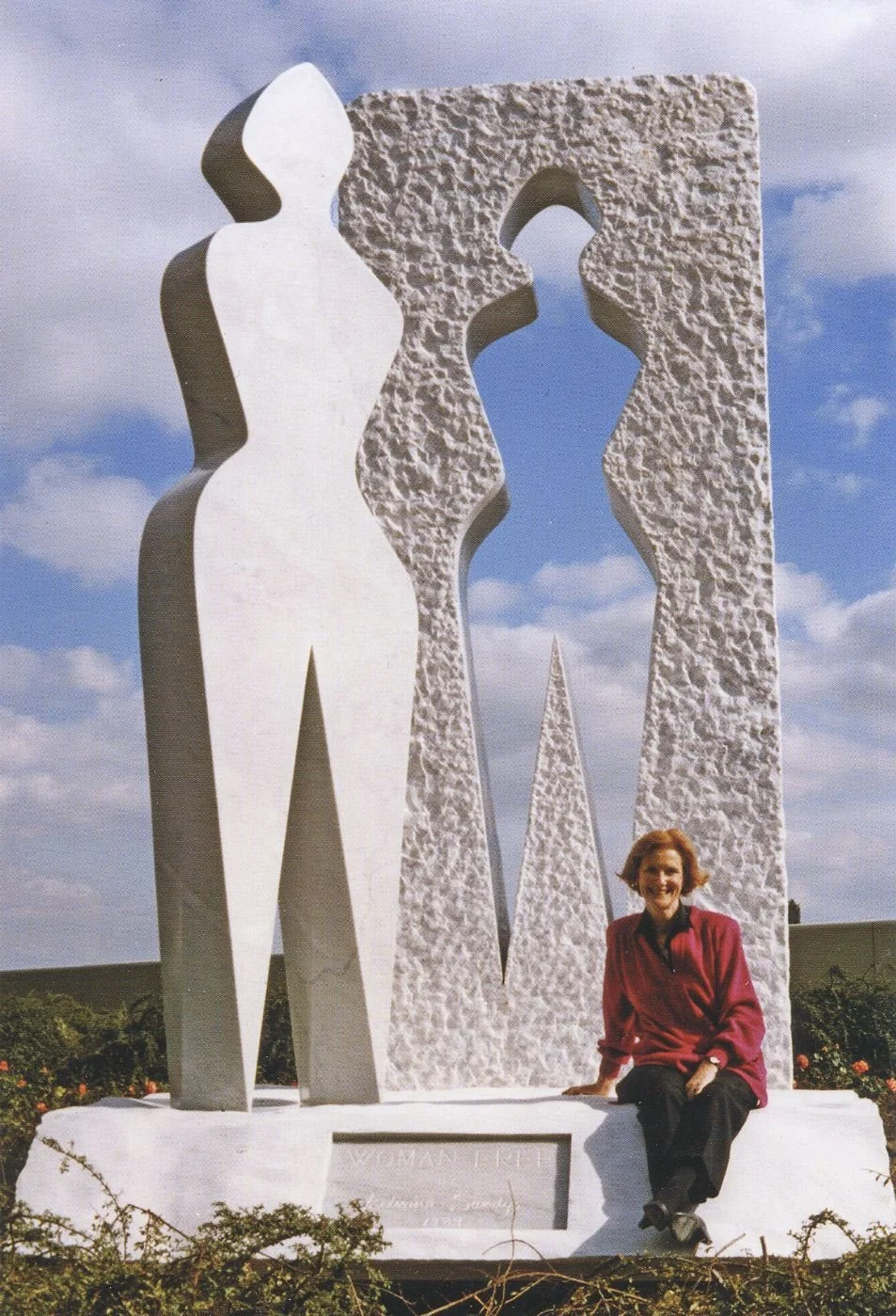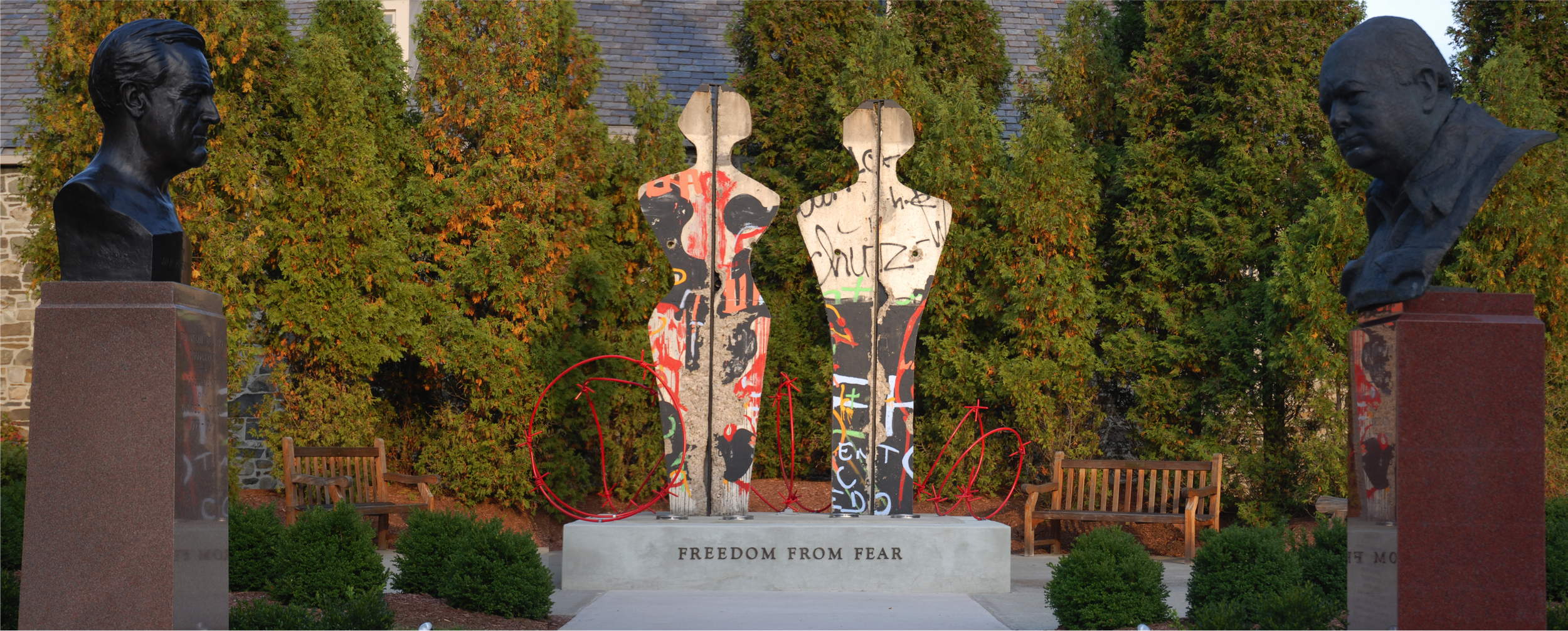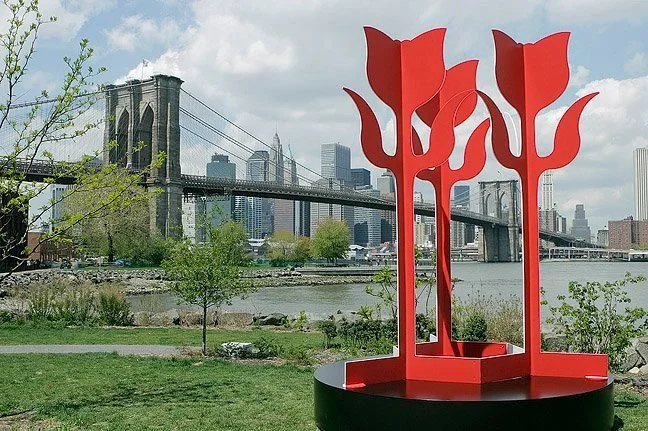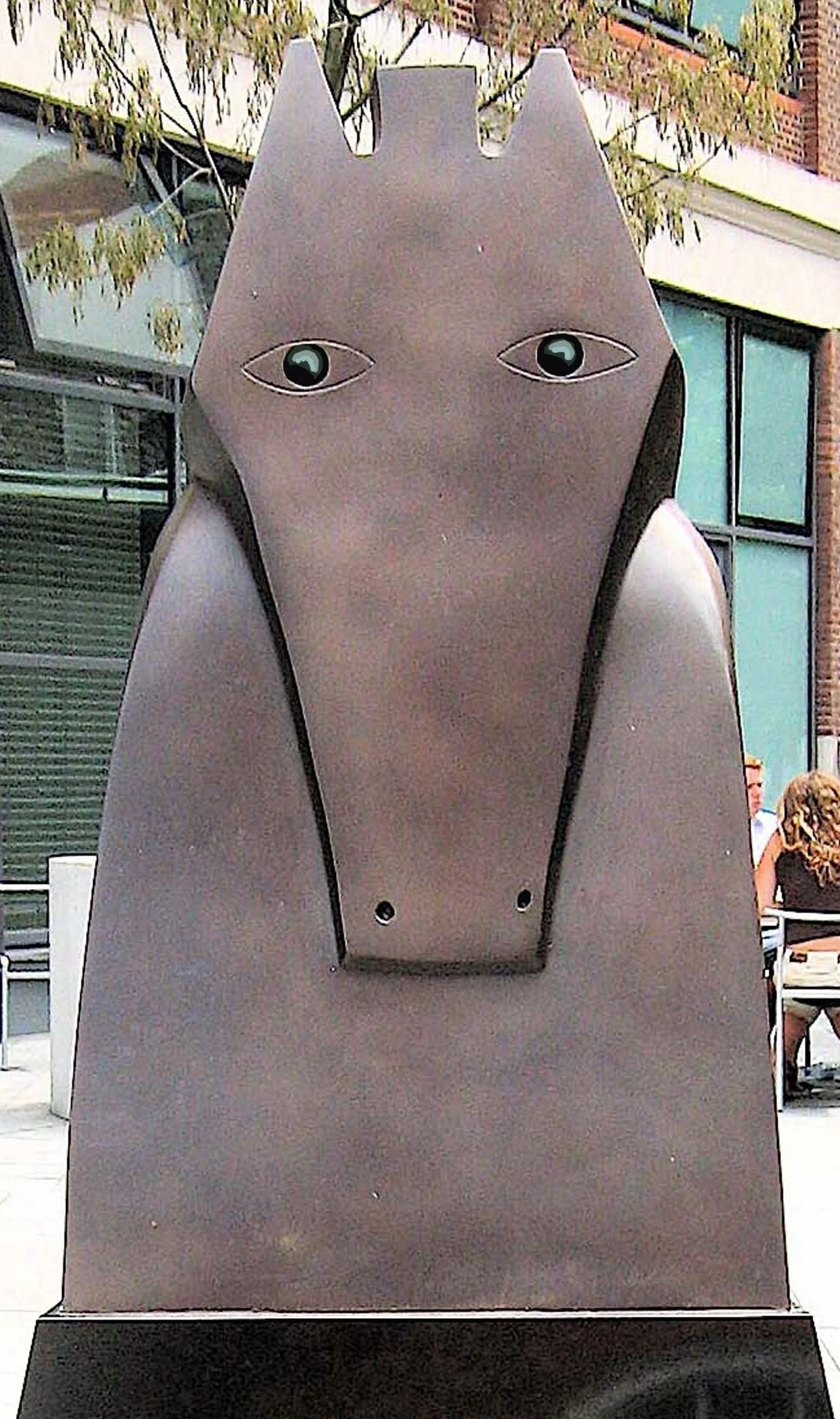Monumental Sculpture
Pillars of Justice, 2007. Steel, 18 x 15 ft. (5 m 50 cm x 4 m 58 cm). McMurtry Gardens of Justice, Toronto Courthouse, Toronto, Canada.
Pillars of Justice is a 20-foot wide steel sculpture consisting of a stylized courthouse façade whose pediment is supported by two rows of pillars shaped liked human beings. These represent the jury, the part of the legal system in which the public most often participates. “People are the pillars of justice,” she says.
But in Pillars of Justice, there are only eleven pillars. Edwina has intentionally omitted one pillar so that a person can stand in the vacant space and imagine representing the important twelfth juror. She invites the public to engage with her art: Pillars of Justice is only completed by the viewer’s interaction.
Judge Gloria Epstein, Chief Justice Roy McMurtry, and Edwina at dedication, 2007.
Eve’s Apple, 1998. Painted steel, 12 ft (3 m 66 cm), Windsor Sculpture Park, Windsor, Ontario, Canada.
Woman Free, 1989. Marble 15 ft (4 m 58 cm), Vienna International Centre, Vienna, Austria
Breakthrough, 1990. Painted concrete, 12 x 32 ft (3.7 x 9.75 m). Westminster College, Fulton, Missouri.
Breakthrough is made from eight sections of the Berlin Wall selected from about 400 made available to Edwina upon the reunification of Berlin, a pivotal event portending an end to the Cold War. According to Edwina, “My challenge in Breakthrough was how to portray an abstract idea: How can one show freedom without its counterpart, unfreedom? In my design, openings shaped like a man and a woman are cut out. The human element is very important, as human beings broke through the Wall. In the sculpture, the Wall and the cut-out spaces need each other and have equal value. The one doesn’t exist without the other.”
BreakFree, 1994 (center). Painted concrete. Height: 11 ft (3.4 m). Freedom Court, Franklin D. Roosevelt Library, Hyde Park, NY. Left: Bust of FDR by Walter Russell, 1943. Right: Bust of Winston Churchill by Oscar Nemon, 1953. Photo: 2007
Using the cut-out pieces of the Berlin Wall that Edwina had saved from Breakthrough, she created a new sculpture, BreakFree, installed at the Franklin D. Roosevelt Library in 1994. The two 11-foot figures of Man and Woman emerge from symbolic giant barbed wire, symbolizing humanity’s quest for freedom. The sculpture stands on a podium inscribed around the base with Roosevelt’s “Four Freedoms.”
Today, BreakFree stands at the center of the Roosevelt Library’s Freedom Court, an addition to the Library’s grounds constructed in 2007. Busts of Franklin D. Roosevelt and Winston Churchill are positioned facing each other, in honor of the two leaders’ friendship and allegiance.
Team Spirit, 1995. Stainless steel, 18 ft (5 m 50 cm). National Data Corporation, Atlanta, GA.
Twin Crosses, 2002. Stainless steel, 9 ft (2m 75 cm), US Embassy Residence, Phoenix Park, Dublin, Ireland.
Twin Crosses is made up of two stainless-steel crosses supporting a salvaged fragment from the former World Trade Center. Within the body of the sculpture, the Twin Towers are portrayed as two vertical voids with the same proportion and relationship as the destroyed skyscrapers. Speaking of the salvaged fragment, Edwina recalls, “The gaping hole reminded me of Edvard Munch’s The Scream—a silent, relentless, unremitting, continual howl of agony. In my mind I now saw the fragment as a head imbued with humanity.”
Tulips, 2005. Temporary installation. Painted aluminum, 12 ft (3 m 66cm). Brooklyn Bridge Park, Brooklyn, NY.
War & Peace (maquette for monumental sculpture).
Child, 1979. Marble, height 15 ft (4 m 60 cm), United Nations International School, New York, NY. Photo: 1980
Family, 1979. Bronze, 14 ft (4 m 27 cm). Palais des Nations, Geneva, Switzerland
Generations, 1980. Aluminum, 12 ft (3m 66cm), Vienna International Centre, Vienna, Austria
Equus, 2002. Bronze on granite plinth, 5 ft (1m 52 cm). London School of Economics, United Kingdom. Gift of Louis Odette.
Rose van Winkle, 1991. Limestone, length 12 ft. (3 m 66 cm).
Rose van Winkle is a site-specific limestone sculpture that echoes the distant mountain range in which Washington Irving’s character Rip van Winkle is said to slumber. Edwina quips, “We felt he might be lonely, so I provided him with a curvaceous companion.”

